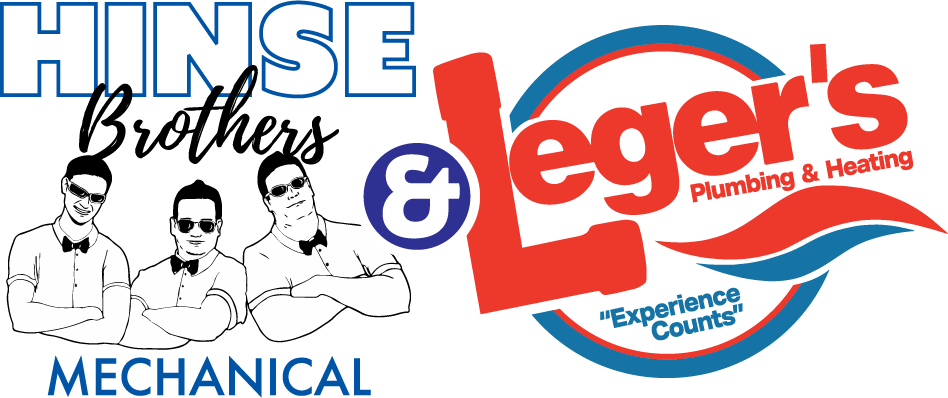
The Ultimate Guide to Affordable Furnace Repair in Sherwood Park!
Hello, Sherwood Park neighbors – Adrian here from Hinse Brothers Mechanical in Sherwood Park! As winter approaches, ensuring your furnace is in top shape is crucial. This guide is your go-to resource for affordable furnace repair in Sherwood Park. We’ll cover everything from DIY tips to when to call the pros, all while keeping your budget in mind.
Understanding Your Furnace: A Quick Overview
Types of Furnaces in Sherwood Park
In Sherwood Park, you’ll primarily find gas and electric furnaces. Understanding the type you have is the first step in managing affordable furnace repair in Sherwood Park.
How Your Furnace Works
A little knowledge goes a long way. Knowing the basics of how your furnace operates can help you identify problems early, potentially saving you money on repairs.
Identifying Common Furnace Issues
Early Warning Signs
Be alert to signs like unusual noises, inconsistent heating, or higher energy bills. These can indicate that your furnace needs attention. Here are some signs to be aware of:
Unusual Noises: New or loud noises like banging, whistling, rattling, or humming can indicate issues within the furnace.
Increased Energy Bills: A sudden spike in your energy bills without increased usage or higher energy prices can indicate that your furnace is losing efficiency and may need affordable furnace repair in Sherwood Park.
Inconsistent Heating: If some rooms are too hot while others are cold, or any uneven heating throughout your home, it could mean that your furnace isn’t distributing air properly.
Frequent Cycling: If your furnace is turning on and off more frequently than usual, it might be overheating, have a bad thermostat, or there could be a problem with the blower motor.
Difficulty Starting the Unit: If your furnace struggles to start or doesn’t start at all, this is a clear sign that it needs attention. The problem could be with the thermostat, pilot light, or electrical components.
Poor Air Quality: An increase in dust, dirt, soot, or rust particles in the air, or a noticeable decline in air quality inside your home, can be a sign of a problem with your furnace’s filter or ventilation system.
Yellow Furnace Flame: The flame of a gas furnace should be blue. Yellow flames indicate incomplete combustion, possibly due to the presence of carbon monoxide, a serious safety hazard.
Strange Smells: Unusual odors, such as a burning smell or a musty odor, can indicate various problems ranging from dust burning off to a gas leak.
Carbon Monoxide Detector Alerts: If your carbon monoxide detector goes off or shows a higher reading, this could indicate a serious issue with your furnace. Carbon monoxide is odorless, colorless and extremely dangerous.
Age of the Furnace: Furnaces typically last between 10 to 15 years. If your furnace is in this age range and experiencing issues, it may need more frequent inspections and repairs, or simply needs to be replaced. Your furnace professional, like the experts at Hinse Brothers Mechanical will discuss this with you.
Thermostat Adjustments: If you find yourself constantly adjusting the thermostat to maintain comfort in your home, it may be due to an inefficient furnace that’s struggling to distribute air properly.
Troubleshooting Basic Problems
Some issues, like a dirty filter or a tripped circuit breaker, can be fixed easily. We’ll guide you through identifying and solving these simple problems.
Regularly Change or Clean Air Filters: This is perhaps simplest yet most effective task. Dirty filters restrict airflow, causing the furnace to work harder. Change disposable filters or clean reusable ones every 1-3 months.
Keep Vents and Registers Clear: Ensure that all vents and registers in the home are unblocked by furniture, carpets, or curtains to allow free airflow.
Check and Adjust Thermostat Settings: Ensure your thermostats are set correctly for the season and functioning properly. Consider installing a programmable thermostat for better efficiency.
Seal Leaks in Ductwork: Leaky ducts significantly reduce your heating system’s efficiency. Use mastic tape or foil tape to seal any visible leaks in exposed ductwork and consider professional duct sealing for extensive systems.
Routine Cleaning Around the Furnace: Keep the area around your furnace clean and unobstructed. This includes gently vacuuming inside the furnace blower doors and around the furnace unit to remove dust.
Inspect the Chimney and Vents: Blocked or dirty vents can restrict airflow and lead to inefficiency and safety hazards. Visually inspect these areas and have them professionally cleaned as necessary.
Lubricate the Furnace Blower Motor: If your furnace has a blower motor that requires lubrication (check your manual), applying a few drops of oil can keep it running smoothly.
Inspect the Fan Belt: Check the fan belt for any signs of fraying or cracking. A loose belt can reduce furnace efficiency. Adjust the tension or replace the belt if necessary.
Test the Ignition System: For newer furnaces with electronic ignitions, ensure they are working correctly. Refer to the owner’s manual for guidance on checking the ignition system.
Check the Flame Sensor and Pilot Light: Clean the flame sensor gently with fine sandpaper, and ensure the pilot light (in older furnaces) is functioning correctly. A malfunctioning pilot light or sensor can cause efficiency issues.
Ensure Proper Insulation in Your Home: Good insulation in your home reduces the workload on your furnace. Check attic, walls, and windows to ensure they are properly insulated.
Annual Professional Maintenance: Beyond these DIY tasks, have a professional HVAC technician perform an annual maintenance checkup. They can handle more complex tasks like checking the heat exchanger and gas connections.
By regularly performing these simple tasks, you can help maintain your furnace’s efficiency, reduce the need for costly repairs, and create a more comfortable, energy-efficient home environment.
DIY Furnace Repair: Simple and Affordable Tips
Tools and Materials You’ll Need
Basic tools like screwdrivers, a flashlight, and a multimeter can be invaluable in DIY affordable furnace repair in Sherwood Park.
Step-by-Step DIY Repair Guide
Follow our step-by-step guide to address common issues like cleaning flame sensors or replacing filters. These simple fixes can be surprisingly affordable:
Safety First
Turn Off Power to the Furnace: Before starting any repair, ensure the furnace is turned off. This can usually be done at the main electrical panel or directly at the furnace switch.
Basic Troubleshooting
Check the Thermostat: Ensure the thermostat is set to “heat” and the temperature setting is higher than the current room temperature.
Inspect the Filter: A dirty filter can restrict airflow. Check and replace or clean the furnace filter if necessary.
Simple Repairs
Pilot Light and Ignition Check (for older furnaces): If the pilot light is out, follow the manufacturer’s instructions to relight it. For newer furnaces with an electronic ignition, refer to the manual.
Clean the Flame Sensor: Carefully remove the flame sensor and gently clean it with fine emery cloth. A dirty flame sensor can cause the furnace to shut down as a safety precaution.
Check and Tighten Electrical Connections: Loose electrical connections can cause issues. Tighten any loose connections, being cautious to ensure the power is off before touching any wires.
Inspect and Adjust the Fan Belt (if applicable): Check for any signs of wear or looseness in the belt that connects the motor to the fan. Adjust tension or replace if it’s frayed or cracked.
Airflow Improvement
Clean Vents and Registers: Ensure all vents in your home are clear of obstructions like furniture or rugs.
Inspect and Clean Ducts: Remove dust or debris from visible ductwork and registers. Consider professional cleaning if ducts are significantly dirty.
Final Checks
Test the Furnace: After completing the repairs, turn the power back on and set the thermostat to call for heat. Observe the furnace’s operation to ensure it’s working correctly.
Monitor Furnace Performance: Pay attention to any unusual noises, smells, or performance issues in the days following your repairs.
Preventive Maintenance
Regular Maintenance: Regularly clean and maintain your furnace according to the manufacturer’s guidelines to prevent future issues.
Important Notes:
Gas Furnaces: If you smell gas or suspect a leak, do not attempt DIY repairs. Evacuate the area and contact a professional immediately.
Electrical Work: If the repair involves electrical work and you’re not experienced, it’s safer to call a professional.
Warranty Considerations: Be aware that some DIY repairs might void your furnace’s warranty. Check your warranty terms before proceeding.
More complex issues, especially those related to the internal components of the furnace (like the heat exchanger), gas supply, or comprehensive electrical work, should be handled by qualified professionals like Hinse Brothers Mechanical. Regular maintenance and timely repairs will keep your furnace running efficiently and safely.
When to Call in the Professionals
Know when to call in the experts. Issues like gas leaks or complex electrical problems should be handled by professionals.
How to Find and Choose a Repair Service
We’ll provide tips on finding a reliable, affordable furnace repair in Sherwood Park. Look for licensed technicians with positive reviews and transparent pricing.
Saving Money on Professional Furnace Repair
Negotiating with Service Providers
Don’t be afraid to discuss pricing with your repair service. Asking for detailed quotes and comparing prices can lead to significant savings.
Understanding and Utilizing Warranties
Know your furnace’s warranty details. Some repairs might be covered, which can reduce your out-of-pocket costs.
Preventative Maintenance: A Key to Long-Term Savings
Regular Maintenance Tips
Regular maintenance, like cleaning and annual inspections, can extend your furnace’s life and prevent costly repairs.
Seasonal Furnace Care Checklist
Follow our seasonal checklist to ensure your furnace is ready for Sherwood Park’s winter. This proactive approach can save you money in the long run:
Fall (Preparation for Winter)
Replace or Clean the Air Filter: Start each season with a clean filter, and change more often during periods of high use.
Test the Thermostat: Make sure your thermostat is working correctly and responds to your settings.
Check the Battery in Your Carbon Monoxide Detector: Replace if necessary.
Inspect and Clean Air Vents and Registers: Ensure they are not obstructed by furniture or debris.
Turn On the Furnace and Observe: Listen for unusual noises and observe if the furnace heats the house to the desired temperature.
Schedule a Professional Inspection: Have a certified technician perform a thorough maintenance check.
Check and Seal Ducts: Look for leaks in exposed ducts and seal them. Consider professional duct cleaning if needed.
Winter (During Peak Use)
Regularly Change the Air Filter: High usage means more frequent changes. Change every month, or every other month in winter.
Monitor Energy Bills: Unexplained spikes in your bills could indicate furnace inefficiency.
Keep Vents Clear: Regularly check that vents are unblocked.
Watch for Warning Signs: Like unusual noises, uneven heating, or frequent cycling.
Spring (Post-Winter Check)
Replace or Clean the Air Filter: Clean up after heavy winter use.
Inspect and Clean Around the Furnace: Vacuum any dust or debris.
Review Furnace Performance: Note any issues to address before the next winter.
Turn Off the Pilot Light (if applicable): For older furnaces, you can save fuel by turning off the pilot light during the warmer months.
Summer (Low Usage Period)
Clean or Replace the Air Filter: Prepare for the occasional use during summer.
Cover the Furnace: If your furnace is in a location where it might accumulate dust or debris, consider a cover.
Schedule Any Repair Work: If you noted issues during the winter, get them fixed in the off-season.
Year-Round
Maintain Clear Space Around the Furnace: Ensure there’s no storage or flammable material near the furnace.
Regularly Test Carbon Monoxide Detectors: Ensure they are functioning correctly.
Upgrading Your Furnace: When and Why
Evaluating Your Current Furnace
If your furnace is old or constantly needing repairs, it might be time to consider an upgrade. We’ll help you evaluate if this is a cost-effective choice for you.
Cost-Benefit Analysis of an Upgrade
Upgrading to a more energy-efficient furnace can be a smart investment. We’ll guide you through conducting a cost-benefit analysis.
Furnace Repair Myths Debunked
Let’s clear up some common misconceptions about furnace repair. Knowing the facts can lead to more affordable and effective repair strategies.
Environmental Considerations and Furnace Repair
We’ll explore how eco-friendly repair options not only benefit the environment but can also be cost-effective for Sherwood Park residents:
High-Efficiency Filters: Using high-efficiency furnace filters can improve air quality and furnace efficiency. These filters trap more debris and particles, reducing strain on the furnace, lowering energy usage.
Sealing and Insulating Ductwork: Leaky ductwork significantly reduces a furnace’s efficiency. Sealing leaks and insulating ducts helps maintain the temperature of the air as it moves through your home, reducing energy waste.
Smart Thermostats: Installing a smart thermostat can optimize your home’s heating schedule, reducing energy consumption by adjusting temperatures based on your daily patterns and preferences.
Regular Maintenance: Regular maintenance, including cleaning and inspections, keeps the furnace running efficiently. A well-maintained furnace uses less energy and has a longer lifespan, reducing waste and the need for new materials.
Energy-Efficient Replacement Parts: When repairs are needed, opt for energy-efficient replacement parts. This can include everything from motors to thermostats. Look for parts with high energy efficiency ratings.
Recycling Old Components: When parts need to be replaced, recycle the old components when possible. This helps to reduce landfill waste and the environmental impact of manufacturing new parts.
Upgrading to a High-Efficiency Furnace: If your furnace is old and inefficient, consider replacing it with a high-efficiency model. Newer furnaces have higher Annual Fuel Utilization Efficiency (AFUE) ratings, meaning they use less fuel to generate the same amount of heat.
Conclusion: Ensuring Efficient and Affordable Heating
In conclusion, understanding your furnace, being proactive about maintenance, and knowing when to call the professionals can lead to significant savings. If you are looking for experts in Sherwood Park to help you, look no further than Hinse Brothers Mechanical – we are located right in Sherwood Park for your convenience! We look forward to helping you!



